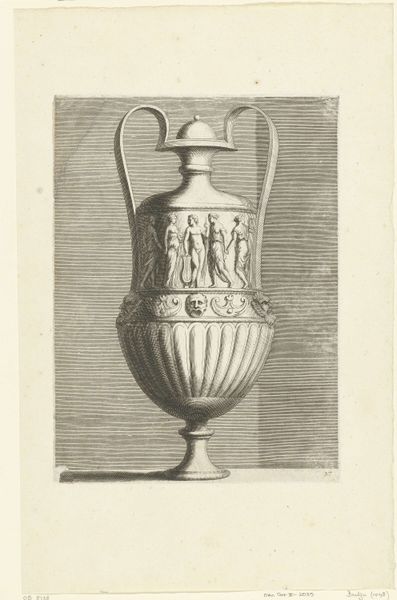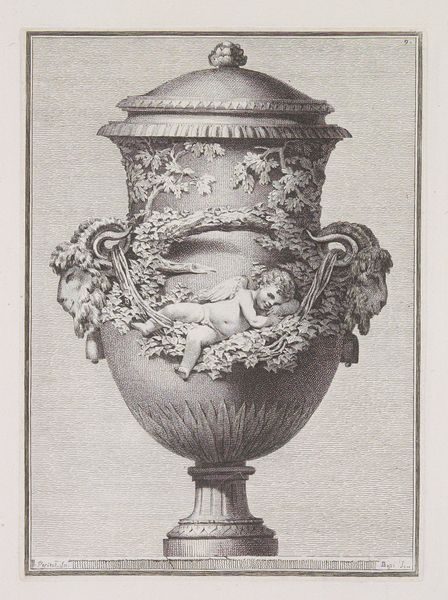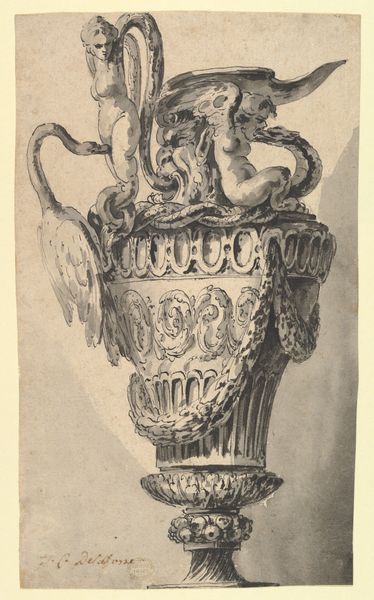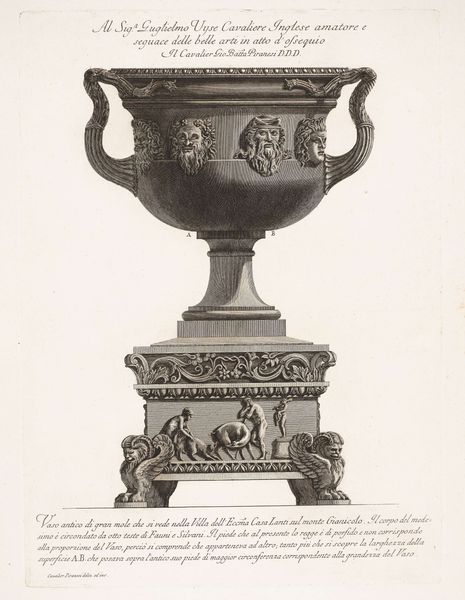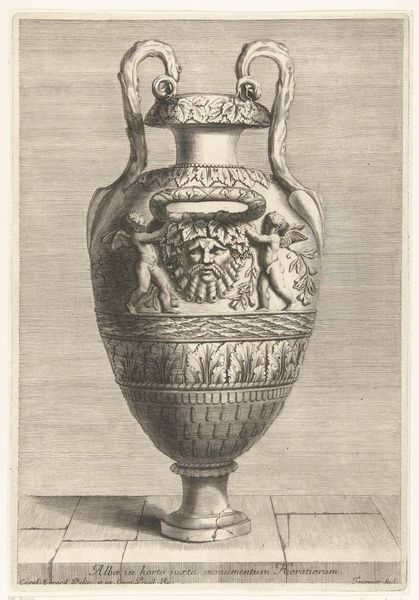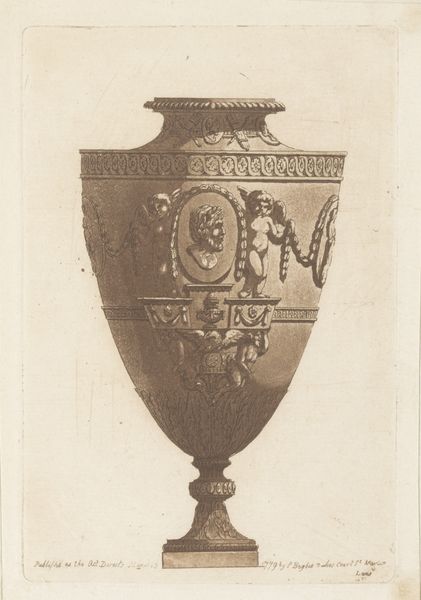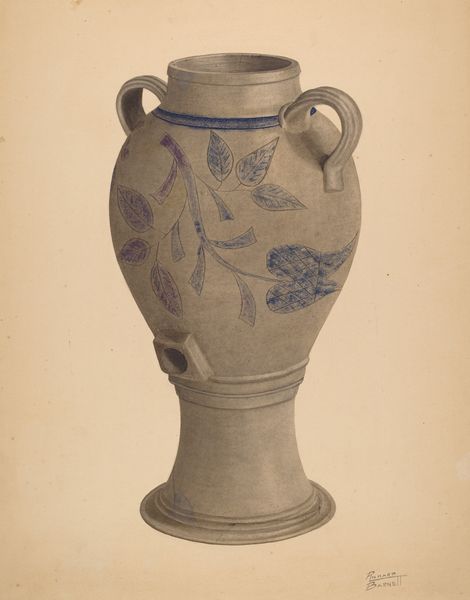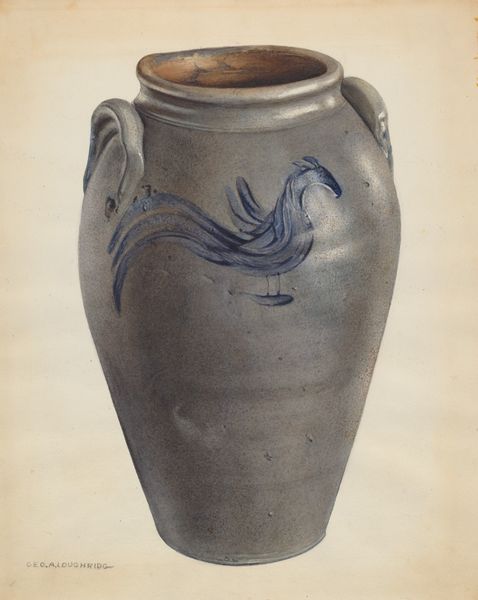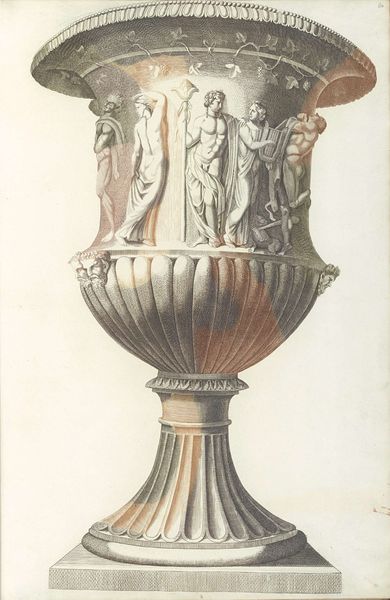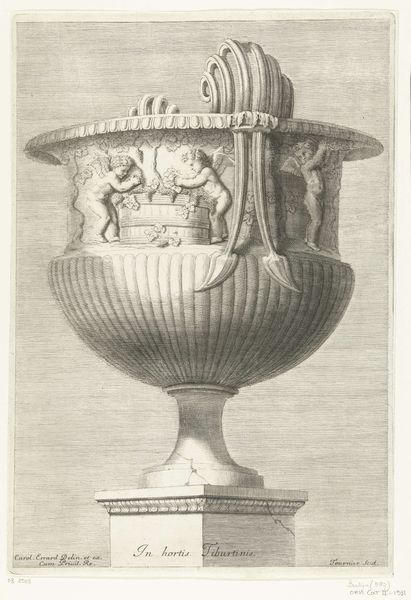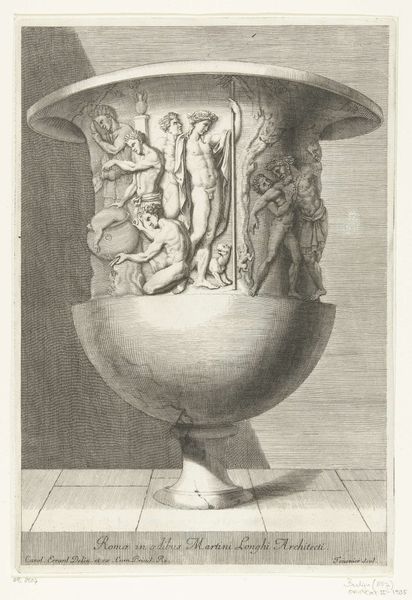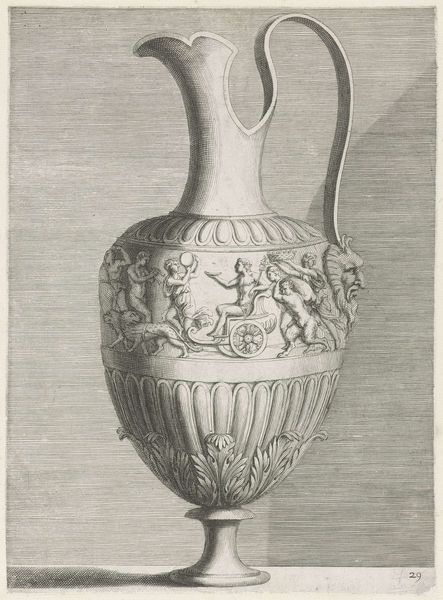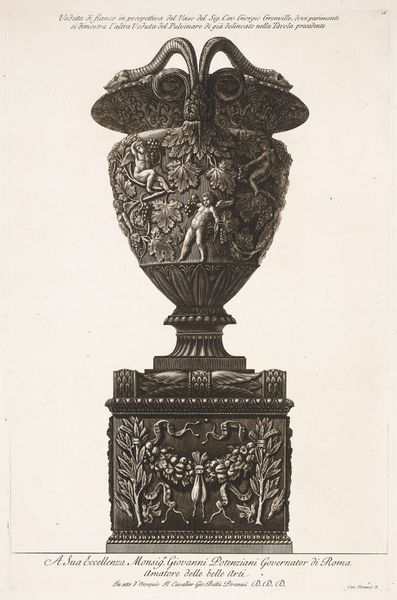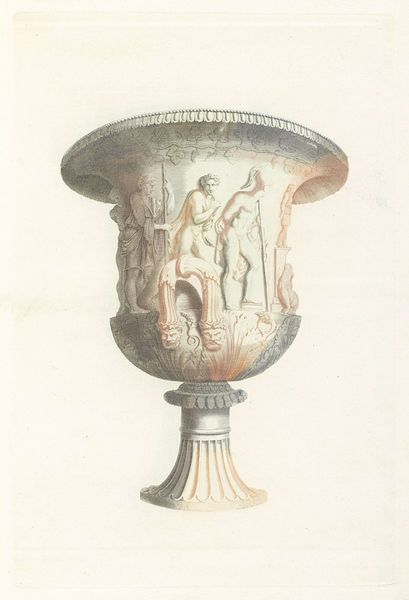
Terracotta volute-krater (mixing bowl) 340 BC
0:00
0:00
ceramic, terracotta
#
portrait
#
narrative-art
#
greek-and-roman-art
#
landscape
#
ceramic
#
figuration
#
roman-art
#
ancient-mediterranean
#
black and white
#
genre-painting
#
terracotta
#
miniature
Dimensions: H. with handles 38 3/4 in. (98.4 cm) H. without handles 34 3/16 in. (86.9 cm)
Copyright: Public Domain
This terracotta volute-krater, or mixing bowl, was created by the Group of New York 17.210.240. Used for mixing wine and water, it evokes a world of ritual and social practice, reflective of the symposium, an important aristocratic, male activity in ancient Greece. What stories can we read in this vessel's layered decorations? How do they portray the power dynamics of the time? The images of gods, mortals, and mythical beings are rendered in a style that emphasizes idealized forms. Are these forms neutral, or do they reflect the values and power structures of a culture that often excluded women and marginalized non-elites? The details of clothing, poses, and settings invite us to consider the complex codes of behavior that governed ancient Greek society. Consider the narratives these images propose and how they relate to our own stories and identities. How do these classical forms resonate—or clash—with contemporary sensibilities?
Comments
No comments
Be the first to comment and join the conversation on the ultimate creative platform.
